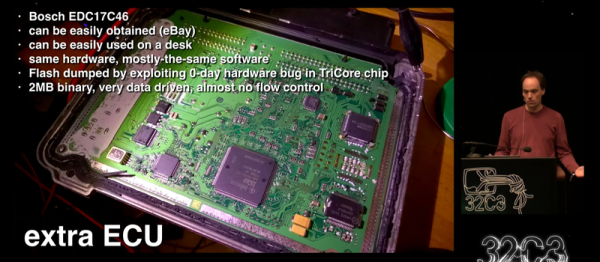Plaster casts are blank canvases for friends and family to post their get well messages. But if it’s holiday season, adding blinky LED lights to them is called for. When [Dr Lucy Rogers] hurt her hand, she put a twitter enabled LED Christmas tree on her cast.
The hardware is plain simple – some RGB LEDs, an Arduino, a blue tooth module and a battery. The LEDs and wires formed the tree, and all the parts were attached to the plaster cast using Velcro. This allowed the electronics to be removed during future X-ray scans. The fun part was in connecting the LEDs to the #CheerLights project. CheerLights is an “Internet of Things” project that allows people’s lights all across the world to synchronize to one color set by a Tweet. To program the Arduino, she used code written by [James Macfarlane] which allowed the LED color to be set to any Cheerlights color seen in blue tooth UART data.
Connectivity is coordinated using MQTT — lightweight standard popular with connected devices. By connecting the MQTT feed to the cheerlights topic from [Andy Stanford-Clark’s] MQTT feed (mqtt://iot.eclipse.org with the topic cheerlights) the lights respond to tweets (Tweet #cheerlights and a color). The LED colors can also be selected via the phone from the color picker tool in the controller, or directly via the UART. If the Bluetooth connection is lost, the LEDs change colors randomly. Obviously, delegates had great fun when she brought her Twitter enabled LED blinky lights plaster cast arm to a conference. It’s not as fun unless you share your accomplishments with others!













